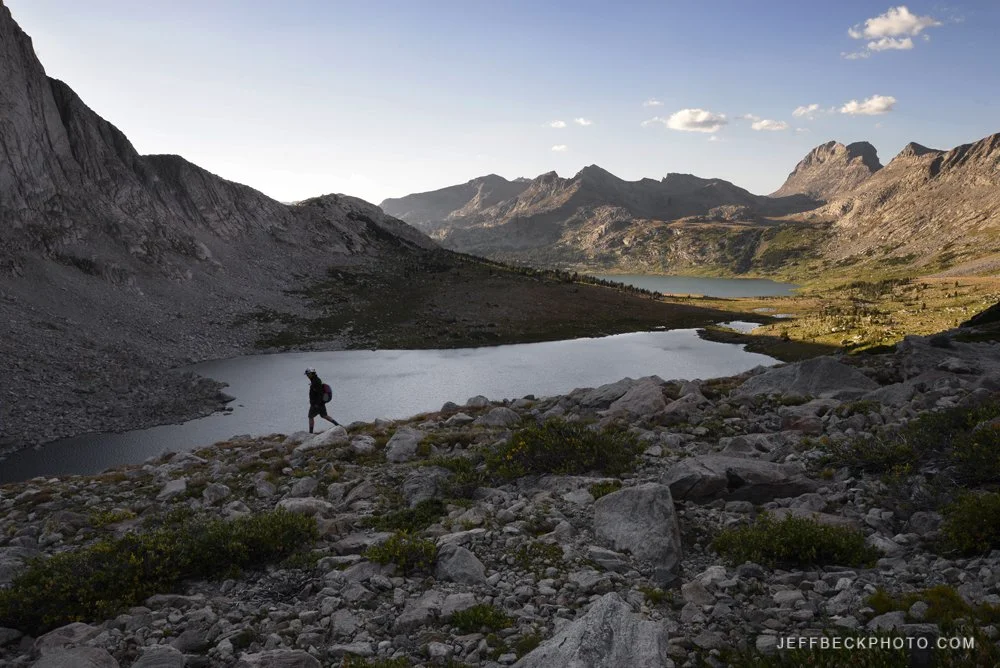Black-necked Stilt Himantopus mexicanus, Salt Lake County, Utah
My favorite avian images from the past three years have all been captured in the same way. I go to a place where I’ve seen birds before, a place where I know birds like to be; typically I set up at the edge of a pond where I’ve observed activity previously.
I plan on being in position an hour to an hour and a half before I want to take pictures. From my experience this is how long it takes waterfowl and wading birds to come around once I’ve intruded into their space. If I’m targeting the sunset hour, I want to take pictures in the light from one hour to thirty minutes before sunset, so I need to be in position at least an hour before that.
I’ll lay my closed cell foam pad down at the very edge of the pond, lie flat on my belly and pull a gillie blanket over me entirely, with just the barrel of my Nikon 500mm PF lens poking out. I just rest the camera and lens right on the ground; one reason I use a neoprene LensCoat.
Key to this set-up for me is a right angle finder. It allows me to stay in this position for hours without wrenching my neck to look through the lens. The more comfortable I am the less I squirm around which leads to more close approaches by my avian friends.
I’ll usually shoot wide open at f5.6 for velvety soft backgrounds. I set my shutter speed to 1/1000 of a second and my ISO to auto. This technique has yielded great results for me, it’s gotten birds to come much closer to me than I could ever approach them. This Black-necked Stilt came so close I could no longer fit its body in the frame, a few inches more and it’s beyond the close focus of my lens.




